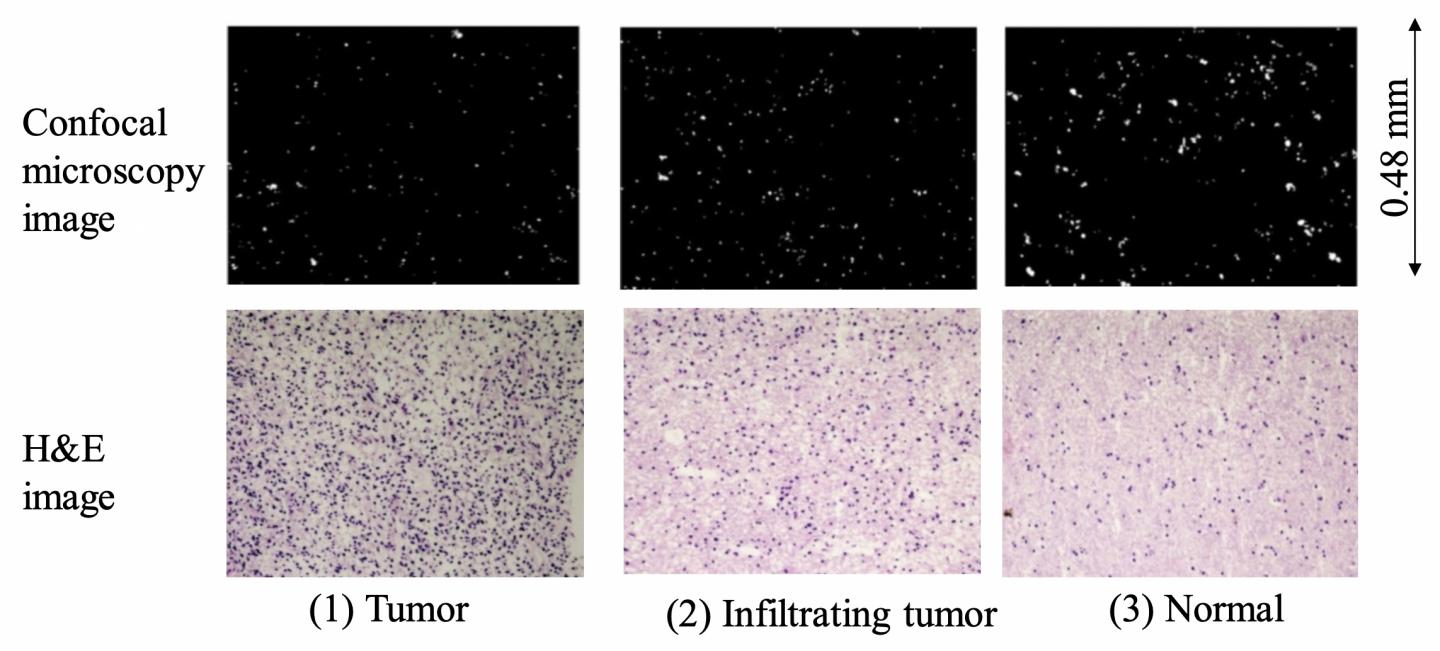
Credit: Kanazawa University
[Background]
Photodynamic diagnosis using 5-aminolevulinic acid (5-ALA) is now widely used for neurosurgical resection of brain tumors. Distinguishing a tumor from healthy tissue is based on greater 5-ALA-derived protoporphyrin IX accumulation in glioma cells than in non-cancerous cells, resulting in much greater red fluorescence (peak at 635 nm) when excited at 405 nm. However, it is still difficult to precisely distinguish the tumor margin and infiltrating regions from non-tumor tissue because the fluorescent boundary is usually vague. In our previous study, we noticed that bright spots in confocal microscopy images may be able to distinguish tumors from normal tissue.
[Methods]
Brain tumor tissues resected from 5-ALA-treated patients was sectioned to evaluate bright spots captured by a 544.5-619.5 nm wavelength band-pass filter that eliminated the fluorescence induced by 5-ALA under a confocal microscope. Boarder regions and adjacent normal tissues were observed. Pathological inspection was performed to confirm the locations of tumors, infiltrating tumor cells, and normal tissue regions by hematoxylin and eosin (H&E) staining of serial sections of the same samples. Bright spot areas were measured in the same region used for pathological inspection. This method was applied to brain tumors with and without red fluorescence as well as glioblastoma (GBM) and non-GBM brain tumors.
[Results]
The bright spot area was substantially smaller in the GBM tumor than in normal brain tissues. It was also smaller in infiltrating tumors than in normal tissue at the margin. The same bright spot pattern was observed in tumors tissues without red fluorescence and in non-GBM tumors. Bright spot fluorescence has been suggested to be derived from lipofuscin based on emission spectra (mainly within 544.5?619.5 nm) and an optimal excitation wavelength (about 405 nm).
[Significance and future prospects]
Bright spot analysis is useful to facilitate discrimination of an infiltrating tumor from bordering normal tissue in photodynamic diagnosis using 5-ALA. This method is also potentially useful for tumors without 5-ALA-derived red fluorescence and non-GBM tumors. The mechanism of bright spot fluorescence reduction in tumors and its application for precise discrimination of brain tumors should be investigated further.
###
Media Contact
Tomoya Sato
[email protected]
Related Journal Article
http://dx.




